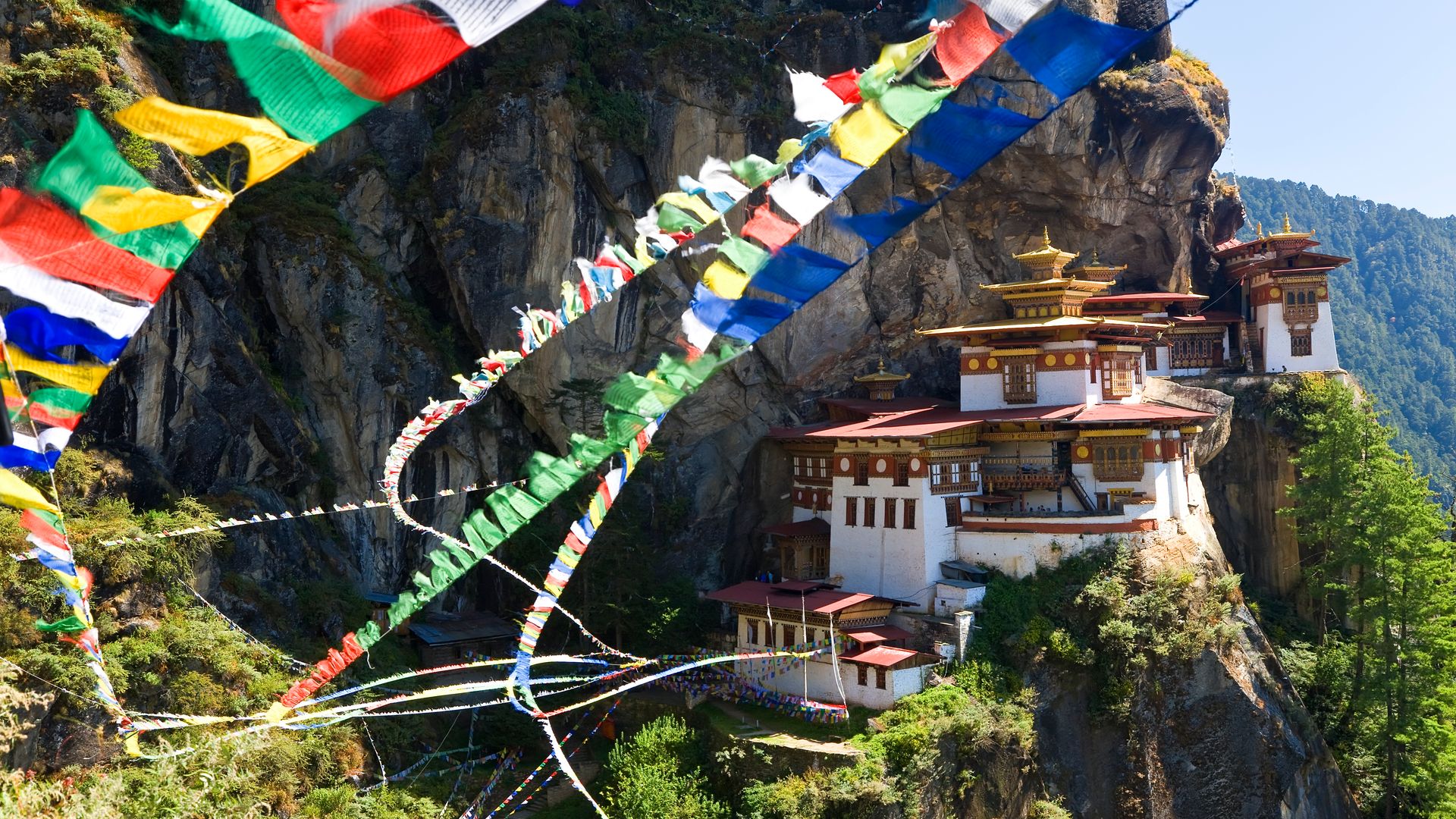With mountaintop temples, sweeping valleys, and breathtaking landscapes, Bhutan is a kingdom like no other.
Here’s what you can’t miss on your first visit to this Himalayan jewel.
A Kingdom that Blends Tradition and Modernity
From the wedding of Prince Jigyel Ugyen Wangchuck to the buzz around an NBA exhibition game, Bhutan’s monarchy never strays far from the headlines. The royal family sets an example of how tradition and modernity can live side by side, whether by personally joining their citizens in building projects or by championing wellness through “Mindfulness City,” a pioneering town designed around wellbeing and community.
In Bhutan, progress is measured not by wealth but by happiness, and its beloved monarchs, known as the “Dragon Kings”, are the heart of this vision.
Valleys, Rice Terraces, and Centuries-Old Temples
This hidden corner of the planet offers more than majestic views. Think valleys covered in rice terraces, traditional villages, sacred Buddhist temples perched dramatically on mountain cliffs, and an unshakable spiritual life rooted in centuries-old traditions. Bhutan is a land where nature and culture remain inseparable.
The Tiger’s Nest and the Paro Valley
Paro, home to Bhutan’s only international airport, is also one of its most enchanting valleys. Here rises the legendary Taktsang Monastery, better known as the Tiger’s Nest. Clinging to a cliffside 900 meters above the valley floor, this sacred site is said to be where Guru Rinpoche, considered the father of Mahayana Buddhism, meditated after flying in on the back of a tigress.
The hike takes two to three hours, but the reward is unforgettable. Don’t miss the Ta Dzong, now the National Museum, or the striking Rinpung Dzong, the valley’s spiritual heart.
Thimphu, the Capital Without Traffic Lights
Colorful buildings, traditional architecture, and a striking absence of traffic lights make Thimphu one of the world’s most unusual capitals. The royal family resides here, and its symbol is the Tashichho Dzong, a grand fortress-monastery that houses Bhutan’s spiritual leader, the Je Khenpo, during summer.
Visitors can also explore nearby monasteries, the School of Arts, the Memorial Chorten built in honor of the third king, and the bustling weekend farmer’s market.
Punakha and Its Iconic Fortress
A three-hour drive from Thimphu, via the panoramic Dochula Pass at 3,050 meters, lies Punakha, the country’s former capital until 1955. The 17th-century Punakha Dzong is among Bhutan’s most beautiful fortresses, dramatically set at the confluence of the Pho and Mo rivers.
It was here that King Jigme Khesar Namgyel Wangchuck wed Queen Jetsun Pema, often called the “Kate Middleton of the Himalayas.” In the valley, don’t miss the Khamsum Namgyal Chorten, a modern stupa perched atop a mountain ridge.
The Sacred Bumthang Valley
Known as the spiritual heart of Bhutan, Bumthang Valley is home to some of the kingdom’s oldest and most treasured temples, palaces, and dzongs. In Jakar, the region’s main town, visitors can dive deep into Bhutanese history.
Beyond the city, life continues much as it has for centuries, offering a glimpse into the kingdom’s enduring traditions.
Healing in the Himalayan Kingdom
Bhutan is also a haven for rejuvenation. From meditation retreats on remote hillsides to thermal baths believed to have healing properties, the country offers endless ways to refresh body and spirit.
Luxury hotels provide holistic therapies, yoga, and wellness programs, but simpler retreats in nature are equally popular for those seeking solitude.
Trekking Paradise
With its crystal-clear glacial lakes and panoramic mountain views, Bhutan is a trekker’s dream. The Druk Path Trek is the most popular route, while the Laya–Gasa Trek and the Jomolhari Loop reward adventurers with breathtaking vistas of Mount Jomolhari, one of the kingdom’s most sacred peaks.
Flavors of Bhutan
Bhutanese cuisine is bold, spicy, and unlike anything in the West. The national dish, Ema Datshi, is made of fiery chilies simmered in a rich cheese sauce. Other specialties include Phaksha Paa (pork with radishes and chilies), Phagshapa (pork belly with turnips), Gondo Maru (scrambled eggs in butter), Jasha Maru (spicy chicken stew), and Sikam Paa (dried pork with chilies).
While luxury hotels refine these recipes for international palates, the flavors remain deeply Bhutanese.
How to Get There
There are no direct flights to Bhutan. Travelers must connect through cities like New Delhi, Kathmandu, Bangkok, or Doha before landing in Paro, the country’s sole international airport, served by Druk Air and Bhutan Airlines.
Travel Essentials
Bhutan follows a “high value, low impact” tourism policy. Every trip is all-inclusive, covering hotels, meals, guides, drivers, and cultural visits.
Visitors pay a daily Sustainable Development Fee of $100 per adult and $50 per child, which funds education, infrastructure, and environmental programs. It ensures that tourism benefits both the people and the land.
Where to Stay
Luxury in Bhutan always honors tradition. Standouts include Como Uma Paro, known for its elegant villas and holistic spa; Naksel Boutique Hotel & Spa, surrounded by pristine forests with views of Mount Jomolhari; and Zhiwa Ling Heritage, Bhutan’s first five-star hotel built in traditional style.
In the capital, Pemako Thimphu offers a serene urban retreat, while Le Méridien Thimphu blends modern comforts with a central location.
